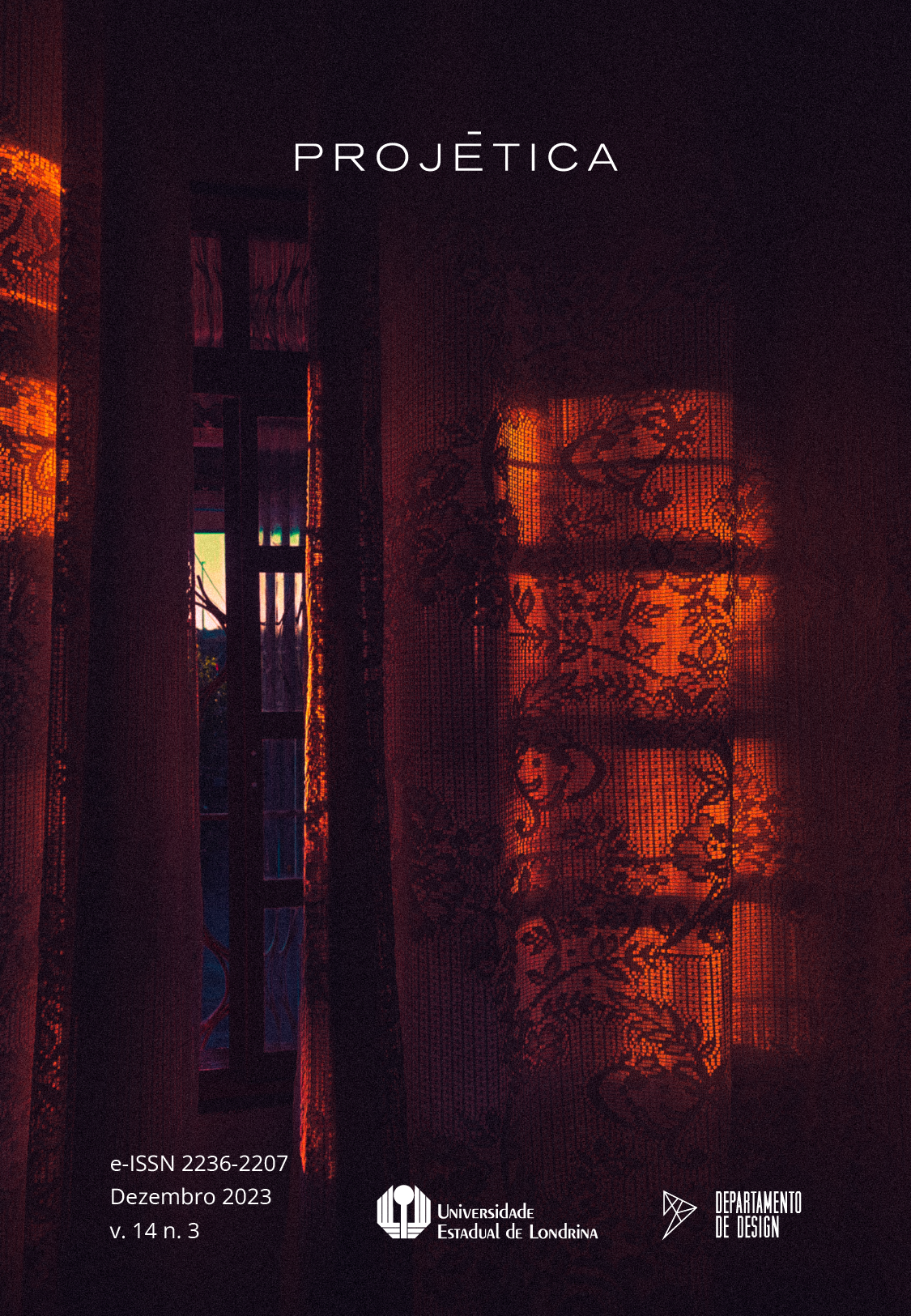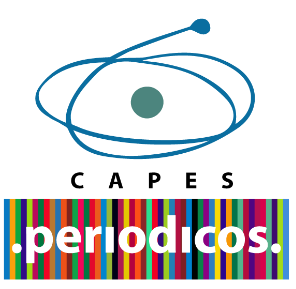Evaluation of Information Architecture for Configuring Accessibility Features on Android for Dyslexia
DOI:
https://doi.org/10.5433/2236-2207.2023.v14.n3.47518Keywords:
Inclusion, Information Architecture, Digital Design, Inclusive designAbstract
Android smartphones have accessibility features that need to be configured for each user. This work identified and evaluated the information architecture for configuring the accessibility features for dyslexia of Android 11 on a Samsung S20 smartphone. 125 improvement opportunities were identified in 77 architecture items. It is not enough to have useful accessibility features on Android, the interface for configuring these features must also have understandable and easily navigated information architecture.
Downloads
References
AGNER, Luiz. Ergodesign e arquitetura de informação: trabalhando com o usuário. 5. ed. Rio de Janeiro: Senac Rio, 2023.
ANDROID. Acessibilidade: o Android feito para você. 2023. Disponível em https://www.android.com/intl/pt-BR_br/accessibility. Acesso em 10 fev. 2023.
APA-AMERICAN PSYCHIATRIC ASSOCIATION. Manual diagnóstico e estatístico de transtornos mentais: DSM-5. 5. ed. Porto Alegre: Artmed Editora, 2014.
BARBOSA, Simone D. J.; SILVA, Bruno S. Interação humano-computador. Rio de Janeiro: Elsevier, 2010.
BERSCH, Rita. Introdução à tecnologia assistiva. Porto Alegre: Assistiva - Tecnologia e Educação, 2017. Disponível em: http://www.assistiva.com.br/Introducao_Tecnologia_Assistiva.pdf. Acesso em: 30 jan. 2023.
BRASIL. Lei nº 13.146, de 06 de julho de 2015. Institui a Lei Brasileira de Inclusão da Pessoa com Deficiência. Brasília, DF: Presidência da República, 2015. Disponível em: http://www.planalto.gov.br/ccivil_03/_Ato2015-2018/2015/Lei/L13146.htm. Acesso em: 01 fev. 2023.
BRASIL. Lei nº 14.254, de 30 de novembro de 2021. Dispõe sobre o acompanhamento integral para educandos com dislexia ou Transtorno do Déficit de Atenção com Hiperatividade (TDAH) ou outro transtorno de aprendizagem. Brasília, DF: Presidência da República, 2021. Disponível em: http://www.planalto.gov.br/ccivil_03/_ato2019-2022/2021/lei/L14254.htm. Acesso em: 10 fev. 2023.
CARVALHO, Táthia C. P. de; DOMICIANO, Cássia L. C.; MEDOLA, Fausto O.; LANDIM, Paula C. Design universal, design inclusivo e design para todos: termos e usos na pesquisa brasileira. In: ANDRADE, Ana Beatriz P.; DOMICIANO, C. L. C.; LANDIM, Paula C.; ROSSI, Dorival C.; BARATA, Tomás Q. F.; SILVA, José Carlos P. (ed.). Ensaios em design: investigação e ação. Bauru: Canal 6 Editora, 2019. p. 142–163.
CUNHA, Wellin Karen A. M. Reprojeto da arquitetura de informação para configuração dos recursos de acessibilidade do Android para Dislexia. 2023. 211 f. Trabalho de Conclusão de Curso (Graduação em Design) - Departamento de Design, Universidade Federal do Rio Grande do Norte, Natal, 2023.
DE SOUZA, Clarisse S. The semiotic engineering of human-computer interaction. Cambridge, MA: The MIT Press. 2005. DOI: https://doi.org/10.7551/mitpress/6175.001.0001
DELGADO, Cristina N. Perdomo; PASCHOARELLI, Luis C.; ZITKUS, Emilene. Participation of users in the development of the information architecture of a telecare application for smartphones based on the card sorting method. In: HCI: INTERNATIONAL CONFERENCE ON HUMAN-COMPUTER INTERACTION, 2022. Proceedings […]. Cham: Springer, 2022. p. 362-369. Virtual Event. DOI: https://doi.org/10.1007/978-3-031-06417-3_49 DOI: https://doi.org/10.1007/978-3-031-06417-3_49
DING, Wei; LIN, Xia; ZARRO, Michael. Information architecture: the design and integration of information spaces. 2 th ed. New York, NY: Springer, 2017. DOI: https://doi.org/10.1007/978-3-031-02308-8
IBGE. Biblioteca. Pesquisa nacional por amostra de domicílios contínua: acesso à internet e posse de telefone móvel celular para uso pessoal em 2021. Rio de Janeiro: IBGE, 2023. Disponível em: https://biblioteca.ibge.gov.br/index.php/biblioteca-catalogo?view=detalhes&id=2101963. Acesso em: 30 jan. 2023.
INSTITUTO ABCD. O que é Dislexia? 2022a. Disponível em: https://institutoabcd.org.br/o-que-e-dislexia/. Acesso em: 11 ago. 2023.
INSTITUTO ABCD. Perguntas e Respostas sobre Dislexia. 2022b. Disponível em: https://institutoabcd.org.br/perguntas-e-respostas/. Acesso em: 11 ago. 2023.
LAMERE, Kelsey; MÄNTYNIEMI, Samu; VANHATALO, Jarno; HAAPASAARI, Päivi. Making the most of mental models: advancing the methodology for mental model elicitation and documentation with expert stakeholders. Environmental Modelling & Software, Oxford, GB, v. 124, p. 104589, 2020. DOI: https://doi.org/10.1016/j.envsoft.2019.104589
MACÍAS, José A.; CULÉN, Alma L. Enhancing decision-making in user-centered web development: a methodology for card-sorting analysis. World Wide Web, New York, v. 24, n. 6, p. 2099-2137, 2021. DOI: https://doi.org/10.1007/s11280-021-00950-y
MARTIN, Bella; HANINGTON, Bruce. Universal methods of design. Beverly: Rockport Publishers, 2012.
MARTIN, Lisa M. Everyday information architecture. New York: A Book Apart, 2019.
MARTÍN, Marina; MACÍAS, José A. A supporting tool for enhancing user’s mental model elicitation and decision-making in user experience research. International Journal of Human–Computer Interaction, London, v. 39, n. 1, p. 183-202, 2023. DOI: https://doi.org/10.1080/10447318.2022.2041885
MAWSTON, Neil. Strategy analytics: half the world owns a smartphone. Strategy Analytics, 2021. Disponível em: https://news.strategyanalytics.com/press-releases/press-release-details/2021/Strategy-Analytics-Half-the-World-Owns-a-Smartphone/default.aspx. Acesso em: 30 jan. 2023.
NORMAN, Don. Design as communication. 2008. Disponível em: https://jnd.org/design-as-communication/. Acesso em: 18 out. 2023.
NORMAN, Don. Systems thinking: a product is more than the product. 2010. Disponível em: https://jnd.org/systems-thinking-a-product-is-more-than-the-product/. Acesso em: 18 out. 2023.
ROBLES, Teresita J. Á.; RODRÍGUEZ, Francisco J. Á.; BENÍTEZ-GUERRERO, Edgard; RUSU, Cristian. Adapting card sorting for blind people: evaluation of the interaction design in talkback. Computer Standards & Interfaces, Amsterdam, v. 66, p. 103356, 2019. DOI: https://doi.org/10.1016/j.csi.2019.103356
RODRIGUES, Patrícia R.; ALVES, Lynn R. G. Tecnologia assistiva - uma revisão do tema. Holos, Natal, v. 6, p. 170-180, 2013. DOI: https://doi.org/10.15628/holos.2013.1595
ROSENFELD, Louis; MORVILLE, Peter; ARANGO, Jorge. Information architecture: for the World Wide Web. 4.th ed. Sebastopol: O’Reilly Media, 2015.
SAINT-LOUIS, Hervé; MCEWEN, Rhonda. Diagrammatic mental representation: a methodological bridge. Visual Studies, London, v. 37, n. 5, p. 664-680, 2022. DOI: https://doi.org/10.1080/1472586X.2021.1878054
SILVIS, Isabel M.; BOTHMA, Theo J. D.; BEER, Koos J. W. Evaluating the usability of the information architecture of academic library websites. Library Hi Tech, Ann Arbor, v. 37, n. 3, p. 566-590, 2019. DOI: https://doi.org/10.1108/LHT-07-2017-0151
STATCOUNTER. Mobile operating system market share worldwide 2009-2022. 2022. Disponível em: https://gs.statcounter.com/os-market-share/mobile/worldwide/#yearly-2009-2022. Acesso em: 30 jan. 2023.
TOUB, Steve. Evaluating information architecture: a practical guide to assessing web site organization. 2000. Disponível em: http://argus-acia.com/white_papers/evaluating_ia.html. Acesso em: 11 ago. 2023.
WHARTON, Cathleen; RIEMAN, John; LEWIS, Clayton; POLSON, Peter. The cognitive walkthrough method: a practitioner’s guide. New York: John Wiley & Sons, 1994.
Downloads
Published
How to Cite
Issue
Section
License
Copyright (c) 2023 Wellin Karen de Amorim Macêdo Cunha, Bruno Santana da Silva

This work is licensed under a Creative Commons Attribution 4.0 International License.
Projética está licenciada sob a Creative Commons Attribution CC-BY 4.0 International. Os autores detém os direitos autorais e concedem à revista o direito de exclusividade de primeira publicação.
Os autores dos trabalhos aprovados autorizam Projética a, após a publicação, ceder seu conteúdo para reprodução em indexadores de conteúdo, bibliotecas virtuais e similares.
Os autores assumem que os textos submetidos à publicação são de sua criação original, responsabilizando-se inteiramente por seu conteúdo em caso de eventual impugnação por parte de terceiros. As opiniões emitidas pelos autores dos artigos são de sua exclusiva responsabilidade.
A revista se reserva o direito de efetuar, nos originais, alterações de ordem normativa, ortográfica e gramatical, com vistas a manter o padrão culto da língua e a credibilidade do veículo. Respeitará, no entanto, o estilo de escrever dos autores. Alterações, correções ou sugestões de ordem conceitual serão encaminhadas aos autores, quando necessário. Nesses casos, os artigos, depois de adequados, deverão ser submetidos a nova apreciação. As provas finais não serão encaminhadas aos autores.











